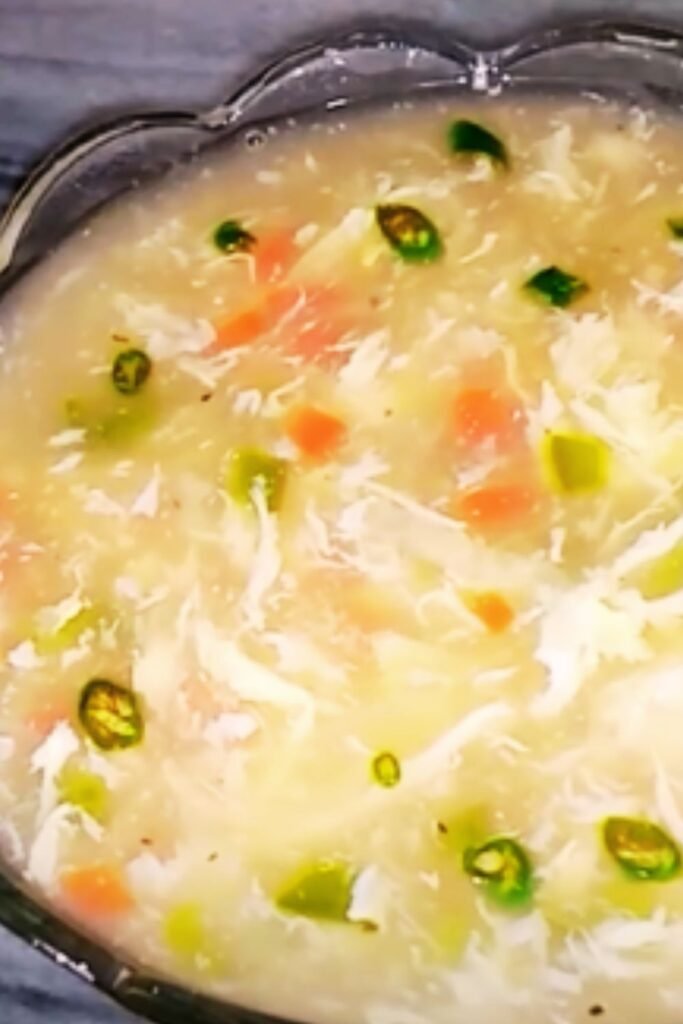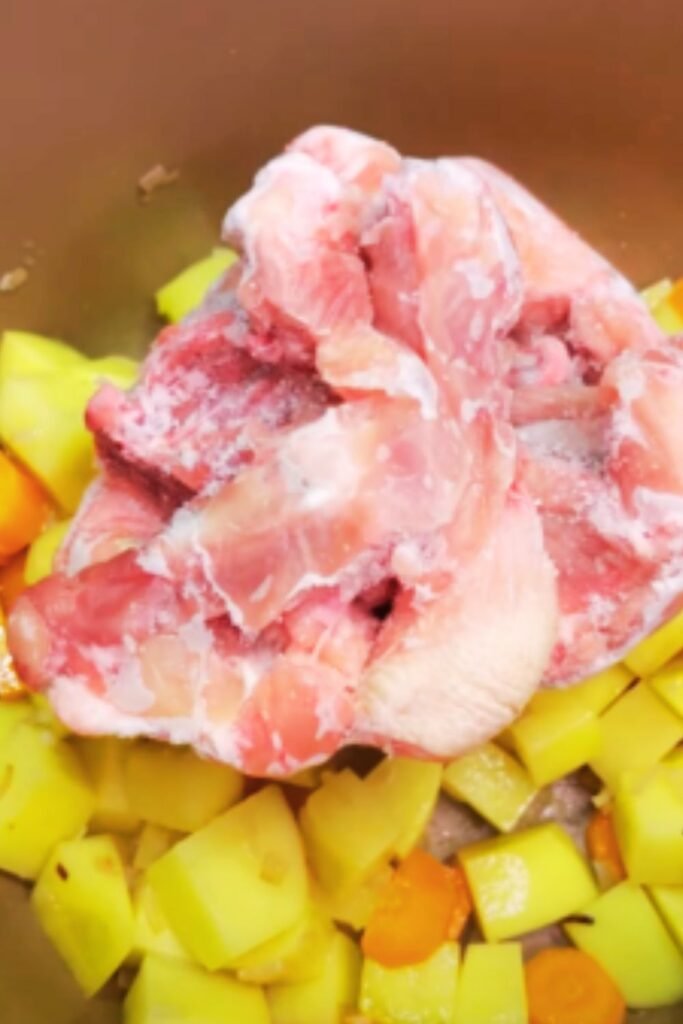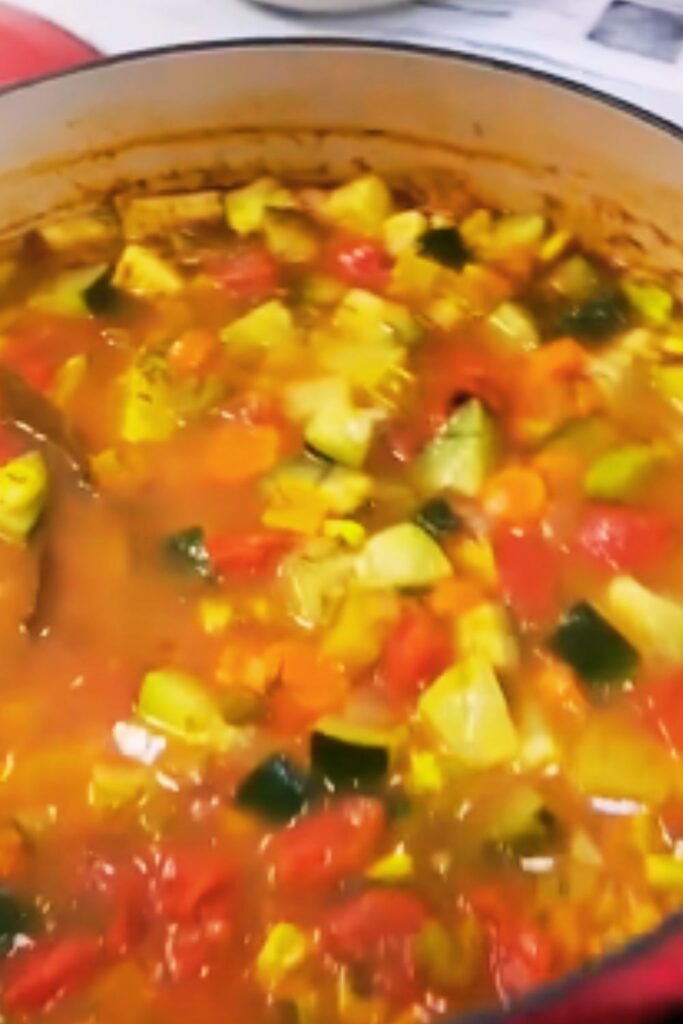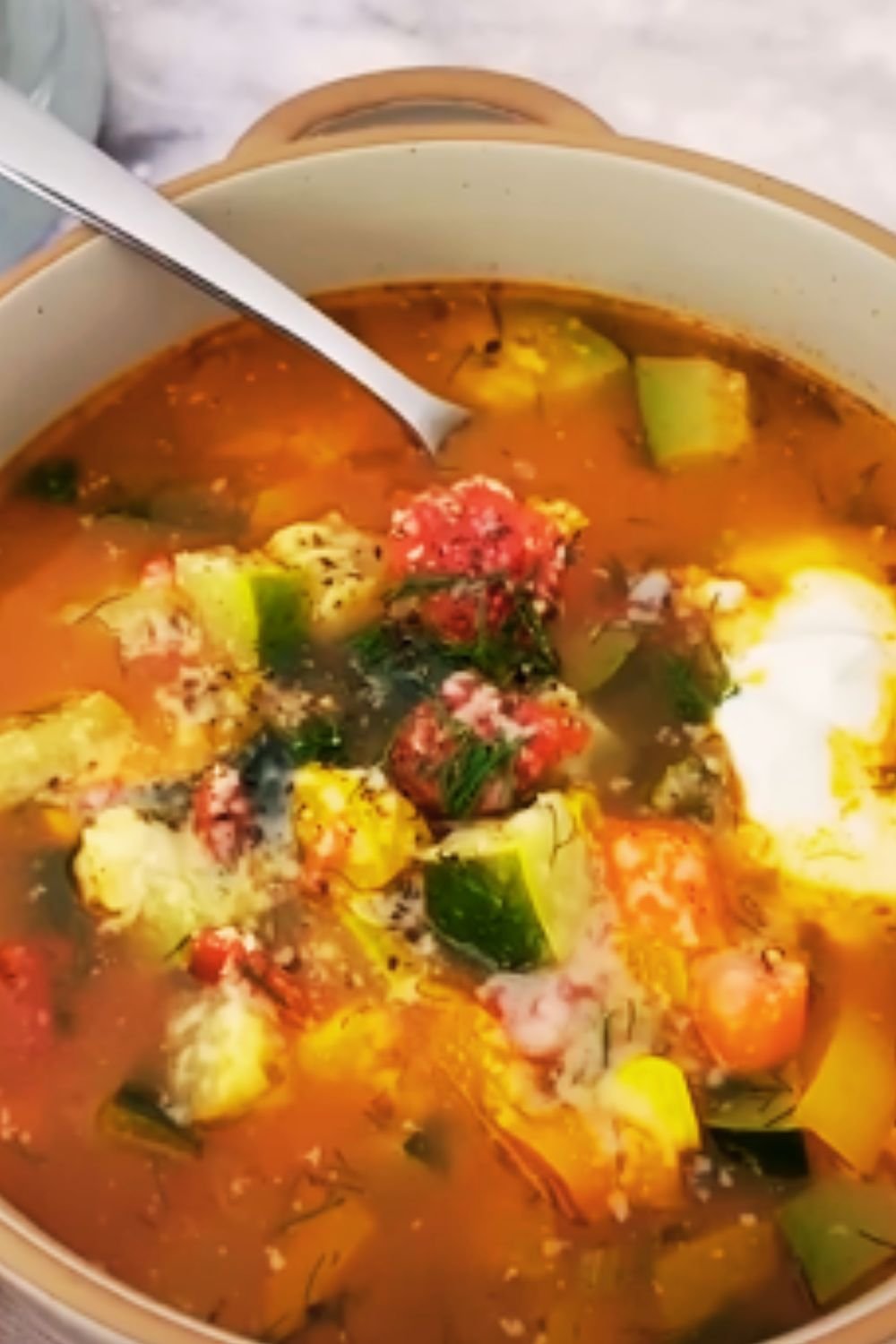There’s something almost magical about a steaming bowl of homemade chicken vegetable soup. It’s one of those recipes that’s been in my family for generations, and I find myself making it whenever someone falls ill, when the weather turns cold, or simply when I need a dose of comfort. The aroma that fills your kitchen while it simmers is enough to make anyone feel at home.
I’ve spent years perfecting this recipe, testing different vegetables, experimenting with herbs, and finding the perfect balance of flavors. Today, I’m sharing my ultimate version that combines wholesome ingredients with simple techniques to create a soup that’s nourishing, delicious, and surprisingly easy to make.
Why Make Homemade Chicken Vegetable Soup?
Before we dive into the recipe, let me tell you why making your own soup from scratch is worth every minute:
- Superior Flavor: Nothing from a can compares to the deep, rich flavor of homemade broth.
- Customizable: You can adjust ingredients based on what’s in season or your dietary preferences.
- Health Benefits: You control the sodium content and can pack it with nutritious vegetables.
- Cost-Effective: Making a big batch costs significantly less than pre-made options.
- Therapeutic: The process of chopping vegetables and watching the soup simmer is remarkably calming.
I’ve found that taking the time to make soup from scratch is not just about the end result—it’s about the process itself. There’s something deeply satisfying about transforming simple ingredients into something greater than the sum of its parts.
Essential Ingredients

Let’s talk about what goes into making the perfect chicken vegetable soup. The quality of your ingredients matters, so try to source the freshest components possible:
For the Broth
- 1 whole chicken (about 4-5 pounds), cut into pieces (or 3 pounds bone-in, skin-on chicken thighs)
- 12 cups cold water
- 2 large yellow onions, one quartered and one diced
- 4 large carrots, two cut into large chunks and two diced
- 4 celery stalks, two cut into large pieces and two diced
- 6 garlic cloves, peeled and smashed
- 2 bay leaves
- 1 tablespoon whole black peppercorns
- 1 tablespoon kosher salt
For the Soup
- 2 tablespoons olive oil
- 1 leek, white and light green parts only, cleaned and sliced
- 3 medium parsnips, peeled and diced
- 2 medium turnips, peeled and diced
- 1 cup fresh or frozen green beans, cut into 1-inch pieces
- 1 cup frozen peas
- 1/2 cup fresh parsley, chopped
- 2 tablespoons fresh dill, chopped
- 1 tablespoon fresh thyme leaves
- 1/2 teaspoon turmeric (optional but adds beautiful color and health benefits)
- 1 cup small pasta such as ditalini or orzo (optional)
- Salt and freshly ground black pepper to taste
- 1 tablespoon fresh lemon juice
Equipment You’ll Need
Having the right tools makes the process smoother:
- Large stock pot (at least 8-quart capacity)
- Fine-mesh strainer or colander
- Sharp chef’s knife
- Cutting board
- Measuring cups and spoons
- Large bowl for straining broth
- Soup ladle
- Storage containers for leftovers
Step-by-Step Preparation
Making the Broth From Scratch
- Prepare the chicken: Rinse the chicken pieces under cold water and pat dry with paper towels.
- Start the broth: Place the chicken in a large stock pot and cover with cold water. Add the quartered onion, large pieces of carrots and celery, smashed garlic, bay leaves, peppercorns, and salt.
- Bring to a simmer: Heat over medium-high until the water begins to boil, then immediately reduce to a low simmer. Skim off any foam that rises to the surface during the first 30 minutes.
- Cook gently: Maintain a gentle simmer for 2-3 hours. You’ll know it’s ready when the chicken meat falls easily off the bone and the broth has a rich, golden color.
- Strain the broth: Remove the chicken pieces and set aside to cool. Strain the broth through a fine-mesh strainer into a large bowl, discarding the vegetables and aromatics.
- Prepare the chicken meat: Once cool enough to handle, remove the chicken meat from the bones, discarding the skin and bones. Shred or chop the meat into bite-sized pieces and set aside.
Assembling the Soup
- Sauté aromatics: Return the cleaned pot to medium heat. Add olive oil, then sauté the diced onion, leek, and remaining diced carrots and celery until softened but not browned, about 5-7 minutes.
- Add more vegetables: Stir in the parsnips and turnips, cooking for another 3-4 minutes.
- Add broth and simmer: Pour the strained broth back into the pot. Bring to a simmer and cook until the root vegetables are tender, about 15-20 minutes.
- Add remaining ingredients: Stir in the green beans, shredded chicken meat, herbs, and turmeric if using. Simmer for another 5-7 minutes.
- Cook pasta (if using): If adding pasta, do so now and cook according to package directions, usually 8-10 minutes.
- Finish the soup: Add the frozen peas during the last 2 minutes of cooking. They’ll retain their bright green color this way. Turn off the heat and stir in the fresh lemon juice.
- Adjust seasoning: Taste and adjust salt and pepper as needed.
- Serve: Ladle the hot soup into bowls, garnish with additional fresh herbs if desired, and serve immediately.
Tips for Perfect Chicken Vegetable Soup
I’ve made this soup hundreds of times, and along the way, I’ve picked up some tricks that make a noticeable difference:
- Cold water start: Always start with cold water when making broth. This extracts more flavor as the water heats up gradually.
- Gentle simmer: Never let your broth boil vigorously. A gentle simmer yields clearer broth with better flavor.
- Skim the surface: Remove the foam that rises to the top during the first 30 minutes of cooking for a cleaner-tasting broth.
- Cool before refrigerating: Let your soup cool to room temperature before refrigerating to prevent bacterial growth.
- Flavor boosters: If you want a deeper flavor, roast the chicken and vegetables before making the broth.
- Make ahead: The flavor actually improves after a day or two in the refrigerator.
Nutritional Benefits
One of the reasons I love making chicken vegetable soup is its incredible nutritional profile. Here’s a breakdown of what you’re getting in each bowl:
| Nutrient | Benefit | Main Source in Recipe |
|---|---|---|
| Protein | Tissue repair, immune function | Chicken |
| Vitamin A | Vision health, immune function | Carrots |
| Vitamin C | Immune support, collagen production | Peas, green beans |
| Vitamin K | Blood clotting, bone health | Green vegetables, herbs |
| B vitamins | Energy production, brain function | Chicken, vegetables |
| Zinc | Immune support, wound healing | Chicken |
| Fiber | Digestive health, satiety | Vegetables |
| Collagen | Joint, skin, and gut health | Chicken bones (in broth) |
| Antioxidants | Cell protection, anti-inflammatory | Herbs, vegetables |
| Electrolytes | Fluid balance, muscle function | Broth |
Variations to Try
The beauty of this recipe is its versatility. Here are some variations I’ve tried and loved:
Seasonal Adaptations
- Spring: Add asparagus, fresh peas, and more fresh herbs
- Summer: Include zucchini, yellow squash, and fresh corn
- Fall: Feature butternut squash, kale, and warming spices
- Winter: Add extra root vegetables, hearty greens, and more garlic
Dietary Adaptations
- Gluten-Free: Skip the pasta or use gluten-free alternatives
- Low-Carb: Omit the pasta and starchy vegetables like potatoes
- Extra Protein: Add white beans or lentils
- Dairy-Free: Already naturally dairy-free!
International Flavor Twists
- Italian: Add a Parmesan rind during simmering, finish with grated cheese and extra herbs
- Mexican: Include lime juice, cilantro, and a touch of cumin and oregano
- Asian: Add ginger, star anise, and finish with a dash of soy sauce and sesame oil
- Greek: Include lemon zest, extra dill, and crumbled feta when serving
Storing and Freezing

This recipe makes a substantial batch, perfect for leftovers or meal prep. Here’s how to store it properly:
Refrigerator Storage
- Cool completely before refrigerating
- Store in airtight containers
- Keeps well for 3-4 days
- If you’ve added pasta, it will continue absorbing liquid, so consider storing it separately
Freezer Storage
- For best quality, freeze without pasta (add fresh when reheating)
- Leave about 1 inch of space at the top of containers as soup will expand when frozen
- Freeze in portion-sized containers for easy defrosting
- Label with date and contents
- Keeps well for up to 3 months
Reheating Tips
- Thaw overnight in refrigerator if frozen
- Reheat gently on stovetop over medium-low heat
- Add a splash of fresh water or broth if needed to adjust consistency
- Refresh with a sprinkle of fresh herbs before serving
Serving Suggestions

To make your chicken vegetable soup into a complete meal, consider these accompaniments:
Bread Options
- Crusty artisan bread for dipping
- Warm dinner rolls with butter
- Garlic bread for extra flavor
- Cornbread for a homestyle touch
Side Salads
- Simple green salad with vinaigrette
- Tangy coleslaw for textural contrast
- Cucumber and tomato salad for freshness
Garnishes
- Extra fresh herbs (parsley, dill, thyme)
- Lemon wedges for brightness
- Croutons for crunch
- Grated Parmesan cheese for richness
- A swirl of good olive oil
- Cracked black pepper
Beverages
- Sparkling water with lemon
- Iced tea
- Hot tea
- Apple cider (hot or cold)
- Fresh fruit juice
Frequently Asked Questions
Q: Can I use rotisserie chicken instead of cooking raw chicken?
A: Absolutely! Using a store-bought rotisserie chicken is a great time-saver. Simply remove the meat from the bones, and if you’d like, you can still make a quick broth with the bones by simmering them for about an hour with the aromatic vegetables before proceeding with the soup recipe.
Q: My soup lacks flavor. What can I do?
A: If your soup tastes bland, try these fixes: 1) Add more salt gradually, tasting as you go; 2) Enhance with a splash of acid like lemon juice or vinegar; 3) Add a Parmesan rind to the simmering soup; 4) Include more fresh herbs; 5) A small amount of soy sauce or fish sauce adds umami without making the soup taste Asian.
Q: How can I make this soup healthier?
A: This soup is already quite nutritious, but you can make it even healthier by using skinless chicken, adding more vegetables, reducing salt, incorporating more fresh herbs for flavor, or adding nutrient-dense greens like spinach or kale near the end of cooking.
Q: Can I make this in a slow cooker or Instant Pot?
A: Yes! For slow cooker: Place chicken and broth ingredients in the slow cooker, cook on low for 6-8 hours, then strain and proceed with the soup assembly. For Instant Pot: Use the pressure cook function for the broth (about 30 minutes at high pressure), then use the sauté function to complete the soup after straining.
Q: What if I don’t have all the vegetables listed?
A: The beauty of chicken vegetable soup is its flexibility. Use whatever vegetables you have on hand or are in season. The key components are the chicken, onions, carrots, and celery for the base flavor. Everything else can be adjusted based on availability and preference.
Q: How do I prevent the vegetables from getting too mushy?
A: Add vegetables to the soup in stages based on their cooking times. Root vegetables (carrots, parsnips, turnips) take longer, while green vegetables (peas, green beans) cook quickly. Also, maintain a gentle simmer rather than a rolling boil to help vegetables maintain their texture.
Q: Can I double this recipe?
A: Yes, as long as your pot is large enough. The cooking times remain roughly the same, though you may need a few extra minutes for the larger volume to come to temperature.
The Healing Power of Chicken Soup
I’ve always believed in the therapeutic benefits of homemade chicken soup, and modern science actually backs this up. Often called “Jewish penicillin” or “nature’s medicine,” studies have shown that chicken soup may help:
- Reduce inflammation by inhibiting the movement of neutrophils (immune cells that promote inflammation)
- Provide easy-to-digest nutrients when appetite is poor
- Improve hydration, especially important during illness
- Clear nasal passages through steam and anti-inflammatory properties
- Provide psychological comfort through warmth and familiar flavors
When I’m feeling under the weather, this soup is always my go-to remedy. The combination of the warm broth, gentle herbs, and nourishing vegetables seems to speed recovery in a way that feels almost miraculous—though it’s actually based on real nutritional science.
Final Thoughts
Making homemade chicken vegetable soup is more than just preparing a meal—it’s creating an experience that engages all your senses and connects you to culinary traditions that span generations. The process may take a few hours, but most of that time is hands-off as the ingredients work their magic.
I encourage you to make this recipe your own. Add ingredients your family loves, adjust the seasonings to your taste, and don’t be afraid to experiment. The recipe I’ve shared is a framework that can be adapted countless ways while still delivering that unmistakable comfort that only homemade soup can provide.
There’s a reason chicken soup has earned its reputation as a cure-all across so many cultures. Beyond its nutritional value, it represents care, comfort, and nurturing—qualities we could all use a little more of in our lives. So the next time you’re looking for something wholesome to cook, I hope you’ll try this recipe and experience the simple joy of homemade chicken vegetable soup.
Q&A Section
Q: Is it really worth making chicken broth from scratch?
A: In my experience, absolutely yes. The depth of flavor you get from scratch-made broth is incomparable to store-bought versions. Plus, you can control the sodium level and avoid preservatives. That said, if you’re short on time, you can use quality store-bought broth and still make a delicious soup.
Q: What’s the secret to a clear, not cloudy broth?
A: The key is gentle simmering rather than boiling. Start with cold water, bring it up to temperature slowly, and maintain a very gentle simmer. Also, diligently skimming the foam and impurities that rise to the surface during the first 30 minutes of cooking will help achieve a clearer broth.
Q: Can I freeze the homemade broth separately from the soup?
A: Definitely! I often make a double batch of broth and freeze half in portion-sized containers. It’s incredibly convenient to have homemade broth ready to go for future soups, sauces, or cooking grains. Properly stored, it stays good in the freezer for up to 6 months.
Q: What’s the best way to cut down the cooking time of this recipe?
A: The longest part is making the broth from scratch. To save time, you can use bone-in chicken parts instead of a whole chicken (they cook faster), use a pressure cooker (reduces broth-making time to about 45 minutes), or use pre-made broth and rotisserie chicken, focusing your efforts just on the vegetable soup portion.
Q: My family doesn’t like certain vegetables in the recipe. Can I substitute them?
A: Absolutely! This recipe is incredibly forgiving and adaptable. Feel free to leave out vegetables your family doesn’t enjoy and substitute with ones they do. The essential flavor base comes from the chicken, onions, carrots, and celery—everything else can be customized to your family’s preferences.


